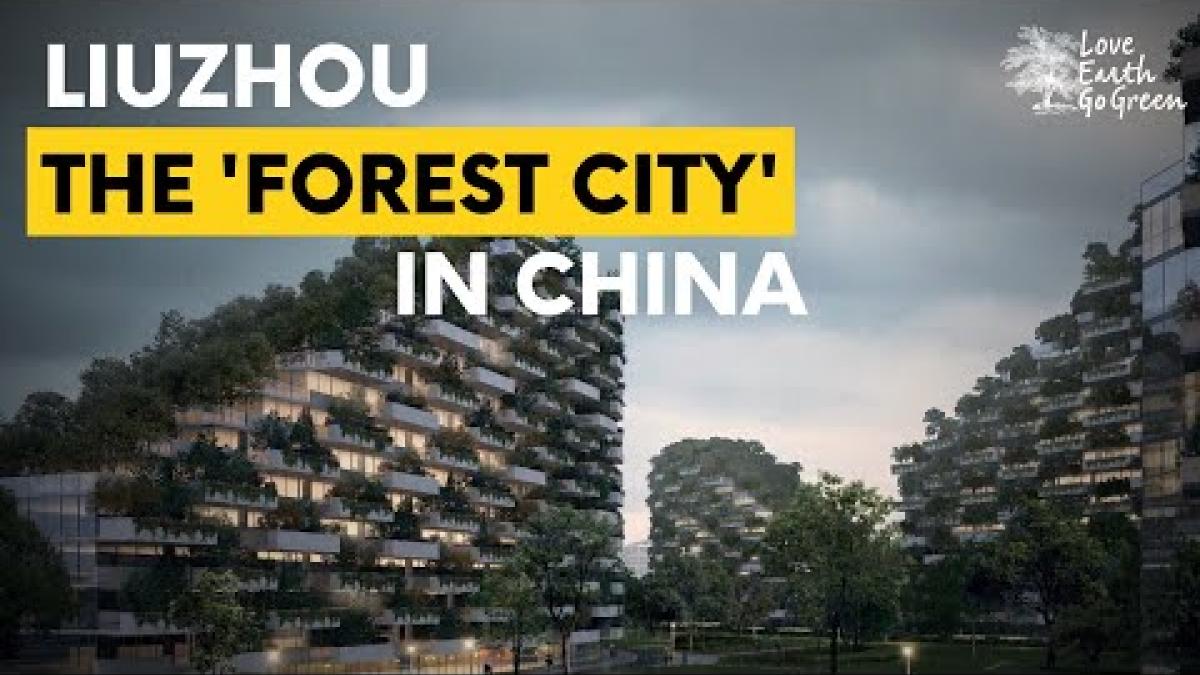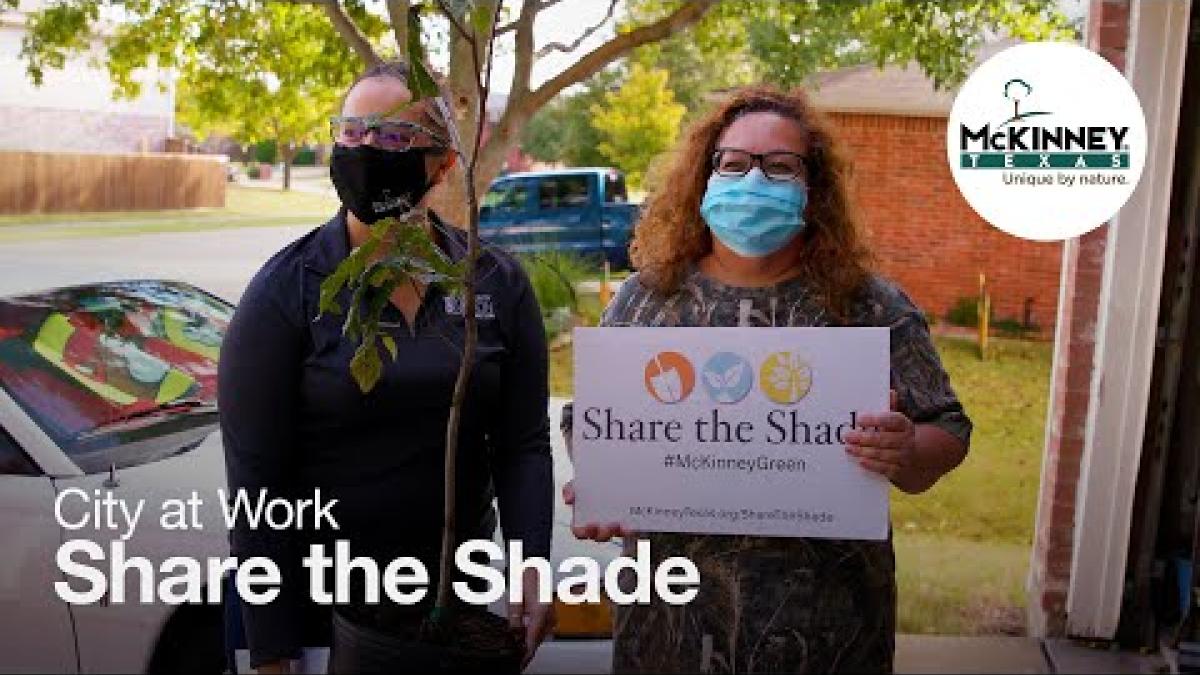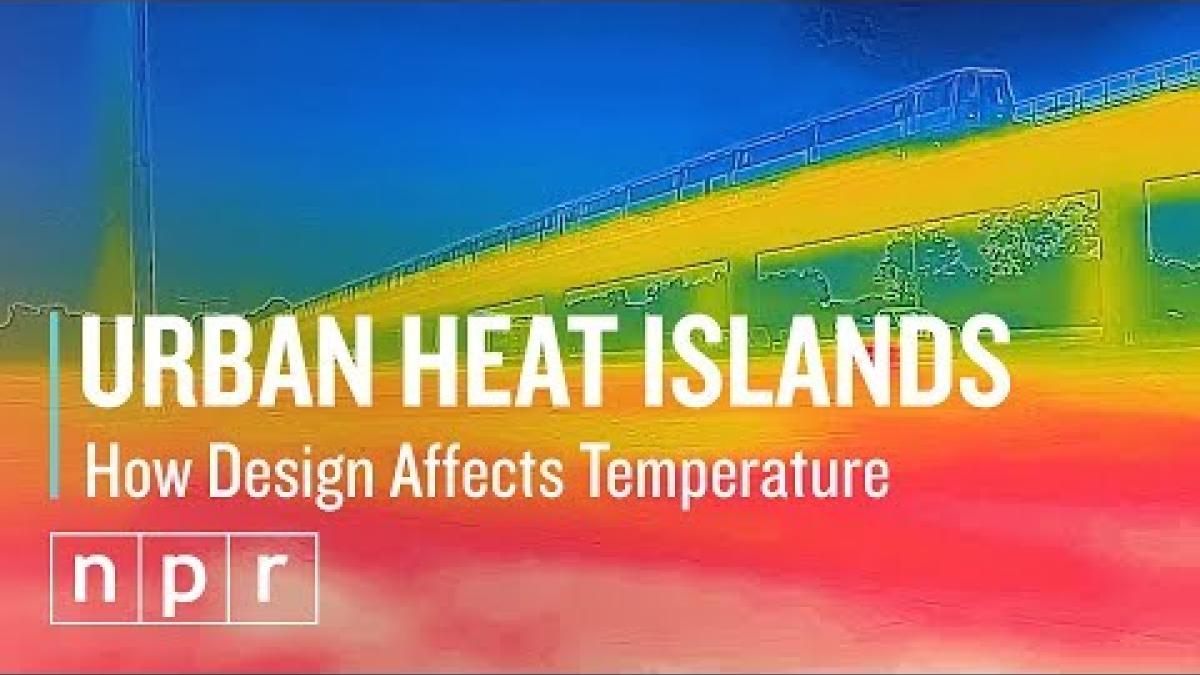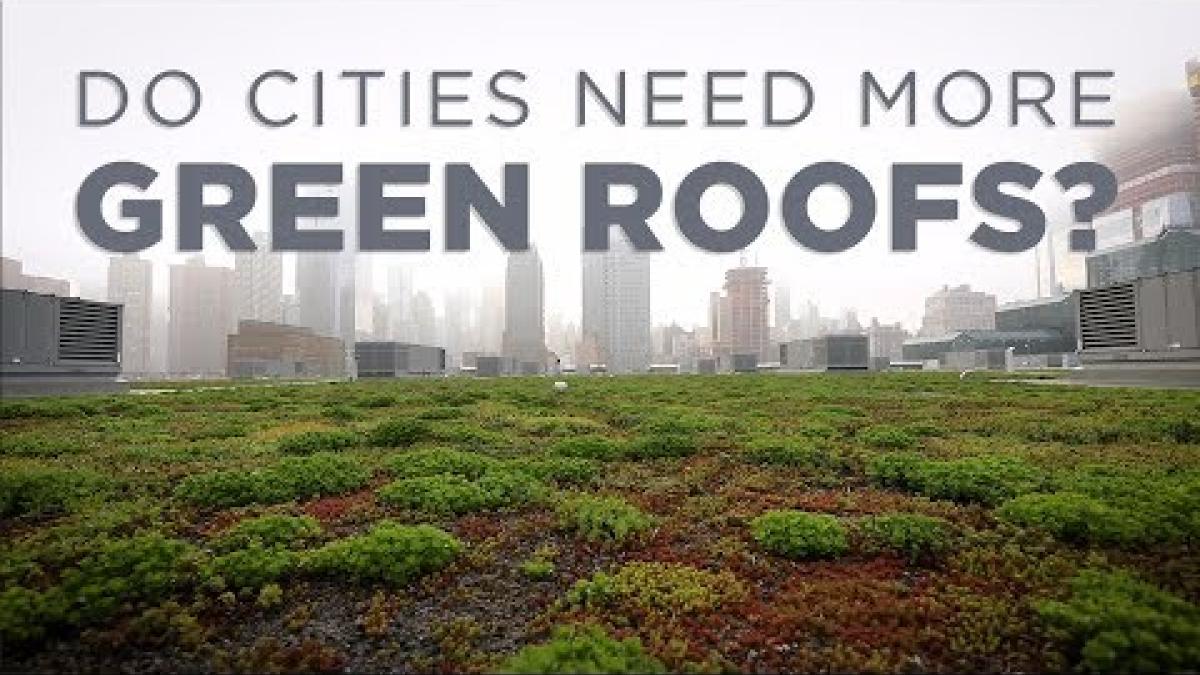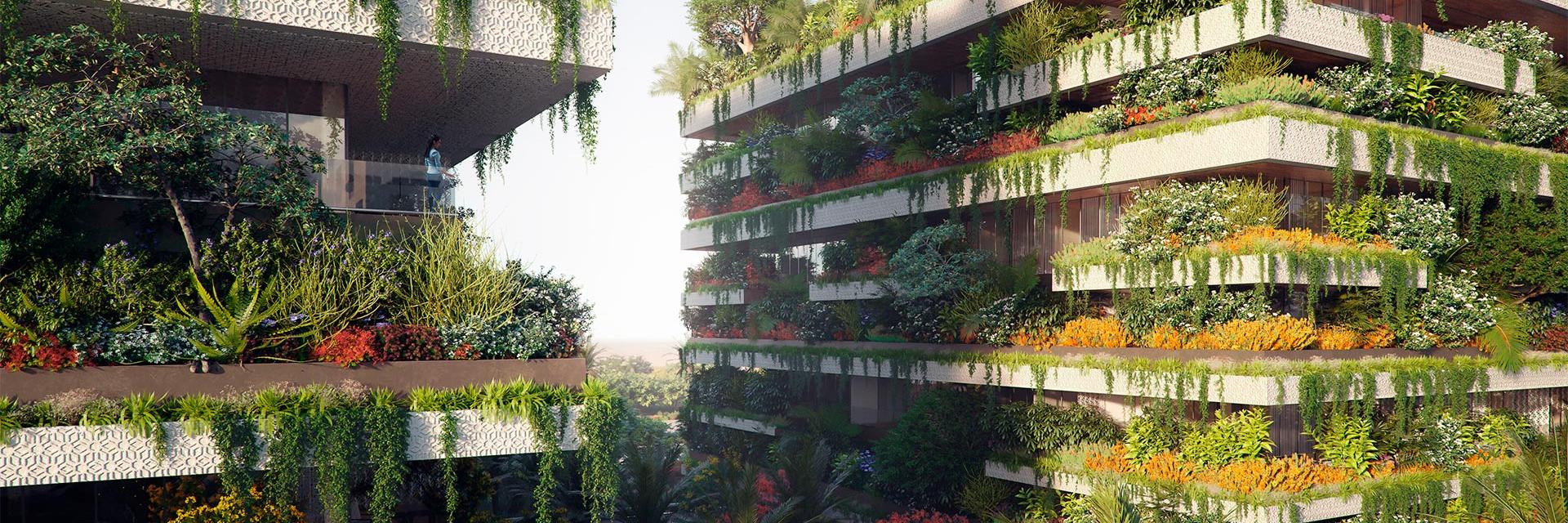
Vertical Forests was designed by Stefano Boeri as part of a broader Greener Cairo vision, which envisages six decarbonization strategies for the Egyptian metropolis aimed at achieving the ecological conversion of the city. In addition to planning new architectural forms, the vision includes a large-scale campaign for making the thousands of flat roofs of the city green. It also includes increasing urban vegetation through the creation of a system of green corridors that cross the old capital and join a larger orbital forest, making Cairo the first city in North Africa to deal with the challenge of climate change and ecological conversion.
Credit: Stefano BoeriNature of Cities
Transform the world’s cities by incorporating nature into urban infrastructure, addressing inequalities, increasing biodiversity, and making neighborhoods cooler, greener, healthier, and safer in the face of extreme weather events such as heat waves and flooding.
Urban planning that incorporates nature can have multiple benefits: cooling environments, reducing flooding, and boosting biodiversity, all while improving physical and mental health, education, and quality of life. Severe heat waves and a warming climate are particularly dangerous where parks, shade, and trees are few, disproportionately affecting poorer neighborhoods in inner-city communities. Traditional building materials like concrete that absorb and radiate heat (along with other human-related activities such as industry, vehicles, and air-conditioning units) create urban heat islands that can raise temperatures in cities up to 22º Fahrenheit higher than surrounding areas. The use of permeable or plant-covered surfaces can cool environments, improve air quality, and mitigate flooding intensified by climate change. Beyond this, incorporating nature into cities can help prevent the extinction crisis that threatens all life systems on the planet. Wildlife can thrive in novel niches such as green roofs, city parks, yards, and vacant lots, making use of green corridors, tree cover, and other urban microecosystems. “Biophilic” or regenerative cities have been shown to be happier, healthier, more productive, and even better educated. When cities develop a network of natural corridors and green infrastructure to connect parks, orbital forests, and green spaces, they enliven residents, ecosystems, and communities.
Action Items
Individuals
Take action in your own city or town to protect and increase permeable and green surfaces, remove pavement, and put in plants and trees. Transform a vacant lot, median, alley, or rooftop you have access to, or join a local group taking such actions. Once transformed, invite the community to observe and record the increasing biodiversity present in the area. Below is a small sample of international projects that bring nature into urban spaces and use it for reducing food insecurity and poverty and for promoting regenerative education and ecosystem restoration:
- The GreenHouse Project in the heart of Johannesburg, South Africa, takes a holistic approach to integrating green building and design, efficient and renewable energy, recycling and organic farming into the city’s mindset.
- City Repair started in Portland, Oregon, and facilitates placemaking projects that build community by bringing nature and art into neighborhoods.
- Urban Farms of Costa Rica is a virtual network for city farmers.
- EcoSattva supports “green cover” projects in India, including 100 Forests, 100 Schools, which creates Miyawaki native forests in partnership with educators and students.
- IVN supports “tiny forest” cultivation in the Netherlands.
- CERES is an environmental education center, community garden, urban farm, and social enterprise hub spread across four sites in Melbourne, Australia.
- The Organization of Permaculture and Art in Salvador, Brazil, brings innovative regenerative design models to urban environments, incorporating education, art, and theater.
- Bioregional Greenworks merges permaculture and worker-owned cooperatives to offer nature-based solutions in urban, suburban, and rural communities, with partners in several U.S. cities and Costa Rica.
Support and protect existing urban green spaces. Public parks, nature preserves, green roofs, and farms in cities can provide valuable wildlife habitat, reduce the urban heat-island effect, and serve as design models for other cities in similar climates. Birds adapt well to cities; about 20 percent of the world’s avian biodiversity live in urban areas. Here’s a sampling of innovative city parks providing educational programs and supporting biodiverse wildlife in different climate zones worldwide:
- Balboa Park, San Diego, California, U.S.
- Centennial Park, Sydney, Australia
- Summer Palace, Beijing, China
- Stanley Park, Vancouver, Canada
- Mount Faber Park, Singapore
- Ibirapuera Park, São Paulo, Brazil
- Tijuca National Park, Rio de Janeiro, Brazil
- Sanjay Gandhi National Park, Mumbai, India
- Central Park, New York, New York, U.S.
- Institute for Nature Studies, Tokyo, Japan
- Table Mountain National Park, Cape Town, South Africa
- National Garden, Athens, Greece
- Chapultepec Forest, Mexico City, Mexico
- Royal Parks, London, England
- Villa Ada, Rome, Italy
- Monsanto Forest Park, Lisbon, Portugal
- Bois de Vincennes, Paris, France
Plant to intentionally maximize biodiversity, support pollinators, and create habitat for endangered species. Research the native pollinators and wildlife in danger of extinction in your area and learn ways to design plantings that specifically benefit them, as monarch butterfly conservationists have done with milkweed cultivation. Here’s how to cultivate a Miyawaki forest, which grows ten times faster, is thirty times more dense, and one hundred times more biodiverse than a conventionally planted tree lot.
Embrace forms of urban housing that preserve or create natural corridors and promote sharing common resources. Communities known as cohousing or ecovillages are typically designed with common natural spaces and clustered housing, ideal for building community and preserving and regenerating wildlife. As the Hugh Garner Housing Co-Operative did, residents of cooperatively owned apartment buildings can decide to put in green roofs, walls, or gardens. If you can’t live in a community, take a tour and learn about ways to increase natural and common space in your neighborhood. A few examples of urban ecovillages worldwide are listed below, and many more can be found on networking sites such as the Global Ecovillage Network.
- Los Angeles Eco-Village, California, U.S.
- Ecovillage at Ithaca, New York, U.S.
- Auroville, Tamil Nadu, India
- Unity Urban Conscious Co-Living, San Jose, Costa Rica
- CVEG Vereniging Ecodorp Gelderland created an urban ecovillage in the Netherlands and supports further ecovillage development nationwide.
Connect with other city foresters and naturalists to observe and document nature and support urban rewilding projects that build biodiversity. Virtual networks can be supported through apps, social media, and websites that connect donors to projects or to local direct action such as community gardening or planting. An app called iNaturalist is a joint initiative of the California Academy of Sciences and the National Geographic Society that allows users to record, share, and discuss natural observations in cities. See the Rewilding Nexus page to learn more.
Speak up. Write an op-ed to a newspaper or social media site promoting climate justice activism through strategies to build citywide heat and flooding resilience or a piece for online sites such as Medium, like this one on green roofs.
Pressure local and national governments to adopt infrastructure measures to increase nature and reduce the risk of extreme heat in cities. This can be done through campaigns and rallies. Here is a resource for finding state and local adaptation plans for climate change in U.S. communities.
Petition your city officials to apply for grants and funding earmarked for cooling urban spaces. Here’s how residents of Petaluma, California, did in hopes of winning a $1 million Cool Cities Challenge grant. Georgetown scholars created a U.S. Federal Funding Compendium for Urban Heat Adaptation. Here are a few grants geared toward lowering the temperature of cities and/or rewilding in general:
- The Urban Tree Challenge Fund in the UK supports the establishment of trees in urban spaces.
- The Greener City Fund was created by Mayor Sadiq Khan of London, England, to support access to green spaces in the city. His National Park City plan to green half of the city by 2050 includes cultivating four urban forests.
- Biophilia Foundation provides grants for biodiversity conservation and rewilding. See the Rewilding Nexus page to learn more.
Practice urban agriculture by planting available spaces such as balconies, rooftops, and façades, and/or join a community garden. Growing fruit, nuts, vegetables, and herbs locally for oneself or for the market has the added benefit of reducing the carbon footprint associated with growing, transporting, and storing produce, and is possible even in tiny spaces on walls or in containers. See the Urban Farming Nexus page to learn more.
Connect natural spaces with others and design them to boost biodiversity through the development of wildlife corridors. Green infrastructure supports birds, butterflies, and other animals, allowing them to travel safely between habitats. A secondary benefit is the potential for children to have access to nature, promoting ecological literacy. Here are some ways to make your neighborhood, alley, rooftop, or backyard more biodiverse, friendly to migrating wildlife, and cooler. See Key Players below for more on urban eco-literacy organizations.
Install shade sails. Coordinate with neighbors or petition landlords and city planners to put shade sails between buildings and in parks and common areas, and/or water features such as fountains or misting machines. These can allow for the planting of trees and gardens beneath that use less water when protected from direct sunlight. In combination, shade structures, along with the planting of vegetation, have the potential to significantly protect neighborhoods from extreme heat while providing wildlife habitat and mental and physical health benefits to people.
Groups
Urban Planners, Architects and Real Estate Developers
Incorporate site-appropriate natural elements that increase wildlife habitat and lower temperatures, decrease flooding, and improve quality of life into urban design in heat-vulnerable communities. Some potential regenerative design features to incorporate, depending on location, include:
Transform vacant lots, rooftops, medians, walls, abandoned industries, and/or rail corridors by planting and installing living surfaces.
- The National Parks Board in Singapore plants more than fifty thousand trees per year through campaigns they have run since 1963, resulting in an increase in natural cover to almost half its land area, even as the population doubled.
- Check out what New Yorkers did with the High Line project for an inspiring example of the transformation of old industrial rail infrastructure, raised above street level, into nature-filled hiking trails and habitat. Rail companies can work with conservationists to support and regenerate habitat along active rail corridors as well, as does Network Rail, which runs most of the rail lines in the U.K.
Protect and improve existing city parks and develop more of them with consciously designed heat- and flood-control features. In the U.S., the City Parks Alliance advocates for greater federal investment in city parks, identifying new funding sources and strategies to ensure equitable allocation of park funding throughout cities and highlighting grant opportunities that leaders can access to support their local parks.
Connect urban beaches, parks, wetlands, forests, and farms with other natural spaces by establishing wildlife corridors. Designing to intentionally support the migration of pollinators, birds, and other animals can significantly benefit biodiversity and protect species from extinction, which in turn supports all life. Research has demonstrated measurable improvements in biodiversity from wildlife corridors as little as twenty-five yards wide.
Investors
Finance companies that manufacture and distribute “smart surface” building materials, especially those that incorporate nature. Popular technologies include porous pavements, green roofs, photovoltaic panels, trees, reflective (cool) roofs and pavements, and combinations of these surfaces.
- The Natural Capital Project developed this free, open-source software that creates maps to visualize where investments in nature can maximize benefits to people. This European Assessment Map shows the potential of nature-based solutions to address climate change adaptation and mitigation across more than seven hundred European cities.
Foundations
Create grants and funding opportunities earmarked for climate justice through the cooling and greening of urban spaces. The Kresge Foundation launched a five-year Climate Resilience and Urban Opportunity Initiative in 2014 that partnered with racial justice organizations to bring the priorities and needs of marginalized communities into regional climate resilience policy. The initiative, which mobilized equity-centered approaches to greening city neighborhoods, is described in this 2019 Evaluation Report. The partnership clearly demonstrated the value of intentionally integrating the experiences of low-income residents into the planning and implementation of policy.
Companies
Take steps to green businesses, corporate campuses, and city buildings. Develop landscapes that reduce temperatures and support wildlife corridors (see the Wildlife Corridors Nexus page), plant native trees, and incorporate other site-appropriate natural and agricultural features. The National Research Council of Canada estimates that a green roof can reduce air-conditioning use in a building by as much as 75 percent. At the hypermodern Apple Park corporate campus in California, a specially engineered natural ventilation system interacts with the forests and onsite environment to purify the air and minimize the need for traditional heating and cooling systems.
Develop and manage wildlife corridors and habitats for pollinators, birds, and animals. While gas and electric transmission lines commonly divide and destroy landscapes, some utility companies have found maintenance savings by managing these corridors as habitats for pollinators and migratory birds. North American utility providers can join the Right of Way Stewardship Council, an accreditation program that establishes standards for responsible right-of-way vegetation management along corridors. The program promotes best management practices to utility vegetation managers to support ecologies and reliability.
- In the Washington-Baltimore metropolitan area, a local utility was pressured to introduce Integrated Vegetation Management in Columbia, Maryland, after residents protested their clear-cutting of vegetation there. The area now includes walking trails and informational signs about trees and wildlife and has been named a certified wildlife habitat.
Governance
Make permeable, living, solar, or reflective rooftops mandatory for new construction or renovation projects. Several cities, including San Francisco, Toronto, Córdoba, and Copenhagen, have passed laws mandating green roof installations when constructing or renovating buildings. Other districts, including Washington, D.C., provide rebates or tax credits for green roof installation projects. Still, others, including Austin and Portland, have amended their zoning laws to grant density bonuses or incentives to developers pursuing green roof projects. Finally, several municipalities provide reductions in stormwater fees to those who install green roofs. Here is a publication that reviewed green roof laws and ordinances in 2019.
Retrofit cities with absorbent living surfaces to control stormwater and dangerous flooding conditions exacerbated by climate change. In China, an ambitious plan to create “sponge cities” with green, porous surfaces that absorb and purify rainwater is being put in place to combat increased flooding in cities, with similar programs being launched in India, Russia, and the U.S.
Form coalitions and involve the public to implement large-scale forestation projects in urban areas successfully. In 2012, Beijing, China, launched the Million-Mu [666 km2] Afforestation Action Plan, leading to the planting of over 50 million trees, with the goal of 45 percent forest cover in the city. The governance structure behind this mega project, which involved a coalition of organizations and the broader public, is analyzed in this article from Urban Forestry & Urban Greening.
Create “chief heat officer” positions in city, state, and national administrations. They can head departments that oversee the transition to urban areas that are greener, cooler, and more resilient to heat waves, as they have in Athens, Greece.
Combine environmental policy with educational initiatives. Work with educators to involve youth in gardening, rewilding urban spaces, and measuring temperature and biodiversity changes. Environmental educators in the U.S. published an online resource detailing programs that restore nature in cities and promote leadership, urban agriculture, green infrastructure, sustainable urban planning, and environmental justice.
Explore several funding models for urban climate action and equity in your city. Innovative funding approaches can simultaneously address social and racial inequities and the effects of global warming. In Baltimore, Maryland, it is estimated that adopting reflective and porous surfaces on a citywide scale would not only reduce summer temperatures 4.5º Fahrenheit in the hottest areas; it would also yield $13 billion in economic benefits over twenty years—ten times the initial cost. Over thirty years, carbon emissions would be cut by 17 million tons. Some successful funding models used by municipalities include the sale of climate or resilience bonds, as well as taxes on sales, electricity, and fossil-fuel production.
Use resources developed by other government agencies to quantify how natureful cities support economic growth, increase tourism, manage stormwater, and improve air quality. Utilize all available tools to learn about the multiple approaches for bringing nature into urban infrastructure and which are most impactful. Here is a sampling of resources created by government agencies of diverse size and scale in order to educate and support others:
- The Excel-based Heat Resilient Cities benefits tool has been designed to help city planners and decision-makers quantify the health, economic, and environmental benefits of common urban heat adaptation actions. Cities can use this information to make the case for urban heat adaptation investments and prioritize the actions likely to have the most positive impact locally. Users can calculate the benefits of specific parks and green infrastructure, water bodies such as rivers and lakes, and cool and vegetative surfaces. The tool can also extrapolate results from these specific investments to calculate the benefits of scaling up across the whole of the city. The tool models the impact of heat adaptation actions on surface temperatures and, in turn, the lower heat-related hospital admissions and economic cost savings that lower temperatures generate.
- The U.S. Environmental Protection Agency website has many resources related to measuring heat islands and implementing solutions and has published a comprehensive Heat Island Compendium of Strategies for governing agencies of cities and municipalities.
- The Smart Surface Analytic Tool is a free analytic engine that allows cities to determine the costs and benefits of the adoption of light, reflective, porous, and green surfaces based on six years of research and development conducted in trial cities.
- This Boston-based Metropolitan Area Planning Council guidebook instructs city leaders on how to creatively partner with community-based organizations and artists to develop creative shade and cooling infrastructure for the public while educating children in eco-literacy.
- This California resource site and Climate Action Resource Guide outlines strategies states and provinces can use to incorporate greening cities into a larger climate action plan.
- The Center for Climate and Energy Solutions (C2ES) is an online hub that facilitates business and community collaboration on climate resilience planning, and that published a City Action on Resilience Report.
- The Government of Canada has a comprehensive publication on reducing urban heat island effects to protect the health of Canadians.
Key Players
Biophilic Cities (Global) partners with a network of cities, scholars, and advocates from across the globe to build an understanding of the value and contribution of nature in cities to the lives of urban residents.
Sustainable Cities Platform (EU) is an information hub that advances the local implementation of the European Green Deal and supports sustainable urban transformations across Europe.
Green Roofs for Healthy Cities (U.S.) develops and protects the market by increasing awareness of the economic, social, and environmental benefits of green roofs, green walls, and other forms of living architecture.
North American Association for Environmental Education (NAAEE) (U.S.) uses the power of education to advance environmental literacy and civic engagement to create a more equitable and sustainable future.
Smart Surfaces Coalition (U.S.) is committed to the rapid, cost-effective global adoption of Smart Surfaces to enable cities to thrive.
The National Oceanic and Atmospheric Administration (NOAA) (U.S.) understands and predicts changes in climate, weather, ocean, and coasts, shares that knowledge and information with others, and conserves and manage
coastal and marine ecosystems and resources.
The Shade Project (U.S.) is a nonprofit organization dedicated to preventing skin cancer through sun safety education, promoting skin cancer screenings, and implementing shade by incorporating natural and heat-reducing features into public spaces.
Biohabitats (U.S.) apply the science of ecology to restore ecosystems, conserve habitat, and regenerate natural systems that sustain all life on Earth. This includes work in urban biodiversity, green infrastructure, and integrated water strategies.
Learn
Watch
Urban Resilience by Michael Berkowitz / TEDx Talks (14 mins.)
Cooked: Survival by Zip Code Documentary (81 mins.)
Read
Nature Obscura: A City’s Hidden Natural World by Kelly Brenner / Mountaineers Books
The Urban Fix: Resilient Cities in the War Against Climate Change, Heat Islands and Overpopulation by Douglas Kelbaugh / Routledge
"In America’s Cities, Inequality Is Engrained in the Trees" by Adam Mahoney / Grist
“The High Price of Losing the War Against Urban Heat” by Linda Poon / Bloomberg
“Extreme Summer” by David Leonhardt / The New York Times
The Urban Heat Island: A Guidebook by Iain Stewart and Gerald Mills / Elsevier
“The Biological Deserts Fallacy: Cities in Their Landscapes Contribute More than We Think to Regional Biodiversity” Spotswood et al. / Bioscience Journal
"A Triple Whammy Has Left Many Inner-City Neighborhoods Highly Vulnerable to Soaring Temperatures" by James Bruggers / Inside Climate News
“What Technology Could Reduce Heat Deaths? Trees.” by Catrin Einhorn / The New York Times
"Killer Heat in the United States: Climate Choices and the Future of Dangerously Hot Days" by the Union of Concerned Scientists
Smart Cities Dive provides in-depth journalism and insight into trends shaping cities worldwide and has a strong environmental news section covering urban climate resilience and rewilding.
Urban Ecovillages Manual, a Global Ecovillage Network publication for groups interested in building regenerative communities in cities.
“How Much Hotter Is Your Hometown Than When You Were Born?” by The New York Times
"From 'Car-dependent Hellscapes' to Green Cities, Canadians Find New Ways to Fight Climate Change" by Don Pittis / CBC News
Listen
City Infrastructure Must Evolve to Protect Residents from Extreme Heat by NPR (11 mins.)
Shade by 99 Percent Invisible Podcast
Shade Redux by 99 Percent Invisible Podcast (30 mins.)
Adapting Phoenix to Extreme Heat by Resilient Futures Podcast (43 mins.)
Climate Change in Cities: Heat Waves, Water Shortage, and Crime Rates by The Green Urbanist Podcast (18 mins.‚
Share this page


